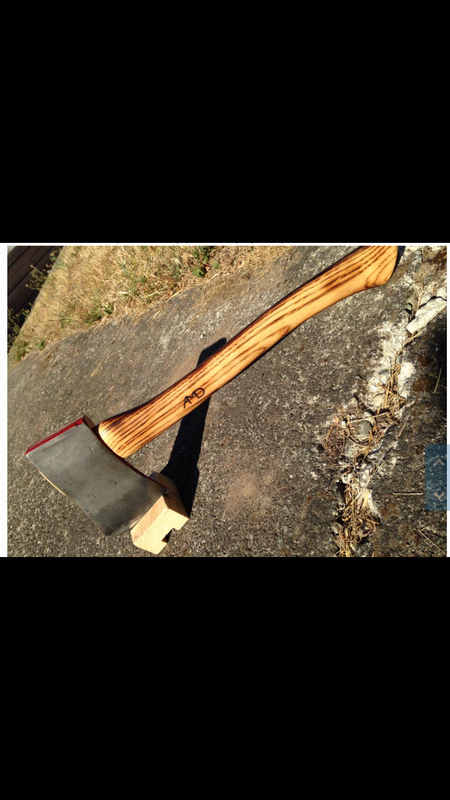I heat mostly with wood, harvesting mixed hardwoods (red oak, beech, maple, poplar) from my and my neighbors' property.
I currently collect branches and splitter trash for kindling, but want to start getting more so my wife and kids can do better at getting fires going quickly when I'm not home. (They seem to be missing my pyromaniac genes.)
We do have a "Kindling Cracker" (the small one) that I bought for my kids to use, since it's safe. It works fine, but I like playing with sharp hand tools. So I also baton kindling with a Condor Bushcraft Parang. That too works well, but keeping a tool in each hand (parang + baton) makes it slow.
So I'm wondering about the practicality of the hand mauls. I've more than once been on the verge of buying Estwing's Fireside Friend, but each time I pick one up at the hardware store, I shake my head at the weight. Seems like it'd be way to tiring to use for an extended period. Maybe not?
So what about the Snow & Nealley Mini Maul, the Gränsfors Splitting Hatchet, the Husqvarna Small Splitting Axe, and similar models? (Fiskars has one too, and while I'm a big fan of their large mauls since they're the only ones I don't break, I'm more interested in something plastic free for this application.)
Does anyone use these types of tool for making serious amounts of kindling? Would a regular hatchet do as well, the lighter weight making it easier to keep going and thus making up for occasionally getting stuck or needing an extra blow?
Any tips on efficient techniques are also welcome. I imagine using a chicken stick to slice of 1 - 2" sticks from a larger piece, hoping to avoid resetting the wood between each blow.
Thank for any insights!
Jack
I currently collect branches and splitter trash for kindling, but want to start getting more so my wife and kids can do better at getting fires going quickly when I'm not home. (They seem to be missing my pyromaniac genes.)
We do have a "Kindling Cracker" (the small one) that I bought for my kids to use, since it's safe. It works fine, but I like playing with sharp hand tools. So I also baton kindling with a Condor Bushcraft Parang. That too works well, but keeping a tool in each hand (parang + baton) makes it slow.
So I'm wondering about the practicality of the hand mauls. I've more than once been on the verge of buying Estwing's Fireside Friend, but each time I pick one up at the hardware store, I shake my head at the weight. Seems like it'd be way to tiring to use for an extended period. Maybe not?
So what about the Snow & Nealley Mini Maul, the Gränsfors Splitting Hatchet, the Husqvarna Small Splitting Axe, and similar models? (Fiskars has one too, and while I'm a big fan of their large mauls since they're the only ones I don't break, I'm more interested in something plastic free for this application.)
Does anyone use these types of tool for making serious amounts of kindling? Would a regular hatchet do as well, the lighter weight making it easier to keep going and thus making up for occasionally getting stuck or needing an extra blow?
Any tips on efficient techniques are also welcome. I imagine using a chicken stick to slice of 1 - 2" sticks from a larger piece, hoping to avoid resetting the wood between each blow.
Thank for any insights!
Jack


